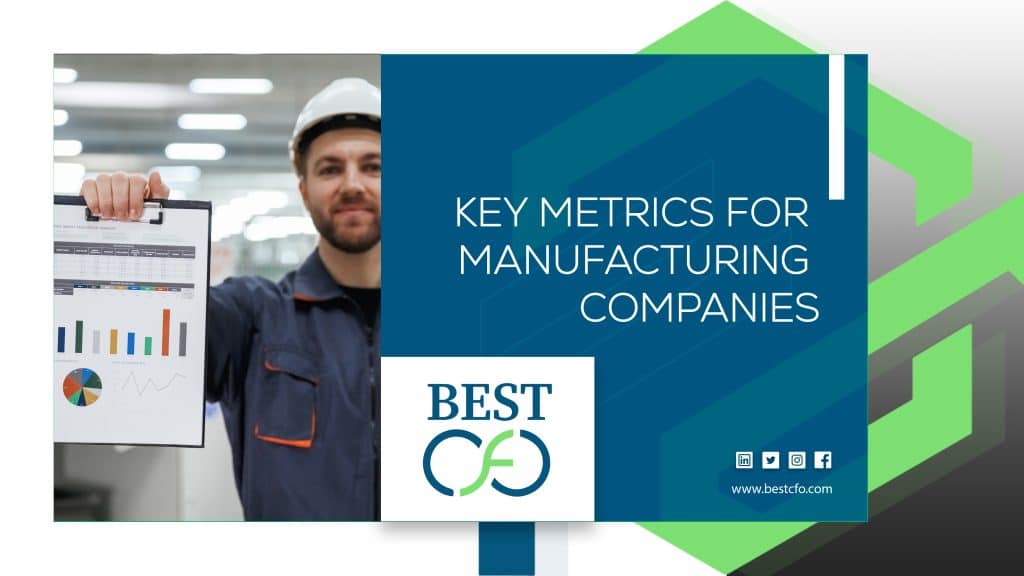
| Getting your Trinity Audio player ready... |
Top Key Metrics for Manufacturing Companies Around the World
When you are not focusing on operations, finances, or both, your business is over before it even got a boost. In 2025 you can’t just afford to rely on your gut feelings, today its all about real-time numbers that properly tell you where you are efficient, and where you wasting money the most. If you focus on this you will know where you have to focus the most.
Your most competitive manufacturers are only focusing forget focusing they are dripping with KPIs that actually matter. These aren’t just any numbers, they are decision making tools.
Let’s see the top KPIs and key metrics for manufacturing companies are using in 2025 to make them more successful.
What Are Manufacturing Metrics?
Key mertrics for manufacturing companies are calculable measures used to track performance, efficiency, productivity, and profitability.
They answer questions like:
- Are we producing enough?
- Are we hitting our deadlines?
- Are our machines underperforming?
- Is our capital working for us or against us?
From a CFO’s perspective, these metrics are the financial pulse of the factory floor.
What Are Manufacturing Key Performance Indicators (KPIs)?
Manufacturing KPIs are the specific, metrics companies use to track progress with their strategic goals.
Think of metrics as raw data (like machine speed or hourly output). KPIs take that data and frame it around goals like cutting downtime by 15%. Where metrics are broad, KPIs are laser-focused on outcomes.
Why Use Manufacturing-Specific Key Performance Indicators?
In finance, you wouldn’t measure a marketing campaign using cash flow metrics same logic applies to operations.
Manufacturing-specific KPIs zoom in on what matters on the floor:
- Output vs capacity
- Equipment performance
- Cost-efficiency
- Time-to-customer
- Material movement
- Asset utilization
Why Your Company Should Be Using Manufacturing-Specific KPIs to Stay Competitive
Your competitors are already using them.
From lean startups in Shenzhen to established plants in Chicago, manufacturing leaders are integrating KPIs with ERP dashboards, IoT sensors, and CFO analytics platforms to:
- Spot inefficiencies before they become profit leaks
- Justify capital expenditures with real data
- Predict supply chain risks
- Improve delivery reliability
- Align floor operations with strategic finance goals
Without these KPIs, you’re running blind in a world that’s already moved to predictive, data-backed manufacturing.
Top 10 Manufacturing KPIs and Metrics That You Should Be Using in 2025
These are the top 10 manufacturing metrics and KPIs that your competitors are using and you should be using them as well:
1. Throughput
How many units are you producing in a given deadline? This baseline metric helps monitor capacity and your input towards the company.
2. Cycle Time
Measures how long it takes to complete a production cycle from start to finish. An important indicator that tells where you care lacking and how you can overcome that.
3. Demand Forecasting Accuracy
Are your projections aligning with your real-time work. Inaccurate forecasts lead to lost sales and opportunities that could have been beneficial.
4. Inventory Turns
How often are you selling and replenishing inventory? A low turn rate may suggest overstocking; too high may risk stockouts.
5. Production Attainment
The ratio of actual production to planned production. Falling short consistently? That’s a red flag for your scheduling process.
6. Cash Cycle Time
How long does it take to convert your raw materials into real cash, the faster you convert, the more you will earn.
7. Avoided Cost
A proactive metric. Tracks cost not incurred due to preventive action think predictive maintenance or supply chain risk mitigation.
8. Changeover Time
Measures the time taken to switch a production line from one job to another. Critical for flexible manufacturers with multiple SKUs.
9. Takt Time
Takt time is the rhythm of production needed to meet customer demand. Too fast = waste. Too slow = lost sales.
10. Return on Assets (ROA)
A CFO favorite. Shows how efficiently you’re turning equipment and infrastructure into net income.

Guidelines for Manufacturing Key Performance Indicators
To make sure that your KPIs count and really matters, follow these guidelines:
1. Clearly Defined Goals
Every KPI should be connected to a business goal: cutting your costs, improve your work uptime, etc.
2. Accurate Way to Measure Progress
Metrics are useless if they’re not accurate. Use automated systems, IoT sensors, and ERP integrations to reduce manual errors.
3. Clearly Defined Data Source
Know where your numbers come from and ensure consistency. Whether it’s MES data or ERP exports, document the source.
4. Efficient Reporting Method
Reports should be real-time, visual, and accessible. A clunky Excel file emailed every Friday isn’t cutting it in 2025.
Top 10 Manufacturing Key Performance Indicators You Shouldn’t Ignore
Beyond floor-level metrics, here are the executive-level KPIs every manufacturing CFO should track:
1. Production Volume
Raw output over time. Critical for demand planning and capacity evaluation.
2. Production Downtime
Unscheduled equipment or line stoppages cost real dollars. This KPI highlights recurring operational issues.
3. Production Costs
From materials to labor to overhead, this KPI shows you exactly where your money is going.
4. Overall Equipment Effectiveness (OEE)
A gold standard in manufacturing KPIs. Combines availability, performance, and quality.
5. Overall Operations Effectiveness (OOE)
Broadens OEE by factoring in scheduled vs unscheduled time helpful for big-picture planning.
6. Total Effective Equipment Performance (TEEP)
TEEP = OEE + calendar utilization. Tracks true capacity over total time, including downtime, weekends, and holidays.
7. Capacity Utilization
Shows what percentage of total capacity is actually used. Underuse = lost revenue. Overuse = wear and risk.
8. Defect Density
How many defects per 100 units? Helps monitor quality control across teams or shifts.
9. Rate of Return (ROR)
How often are products being returned? Indicates product issues that may not show on the production floor.
10. On-Time Delivery
Measures fulfillment success and supply chain alignment. One of the most customer-visible KPIs.
What Makes the Best Manufacturing KPI Metrics?
The best KPIs are relevant, timely, and actionable. Here’s what that means in practice:
- Relevant: They directly influence a strategic objective
- Timely: They’re updated frequently enough to drive real decisions
- Actionable: They point to a clear next step (not just a number)
Great KPIs don’t just describe the past—they help shape the future.
Bottom Line
Today the manufacturing industry is no child’s play nor any guess work. It really doesn’t matter if you are running a small business or you are the CEO of Google, understanding these key metrics for manufacturing companies is the right way to have a successful and running business.
From the CFO to the operation’s room, these metrics will tell you whether you are earning profit or just wasting your money.
You should always invest your precious money in tools, and people who are profitable for your business, because once a wise man said what gets measured gets managed.
FAQ
- What is the most important KPI in manufacturing?
Overall Equipment Effectiveness (OEE) is often considered the most critical, combining quality, availability, and performance into one key metric. - How many KPIs should a manufacturing company track?
Aim for 8–15 high-impact KPIs depending on your size and focus. More than that leads to noise, not clarity. - What’s the difference between a metric and a KPI?
Metrics measure general performance; KPIs are tied to specific business goals. - Can ERP systems help track manufacturing KPIs?
Absolutely. Modern ERPs like NetSuite, SAP, and Oracle can automate KPI tracking across production, finance, and inventory. - What tools are best for visualizing KPIs?
Power BI, Tableau, or native ERP dashboards are ideal for real-time manufacturing data visualization. - How do I improve my OEE score?
Start by analyzing unplanned downtime, improving maintenance schedules, and training operators to reduce quality defects. - Is takt time the same as cycle time?
No. Takt time aligns with customer demand, while cycle time measures how long it takes to complete one unit. - What are financial KPIs in manufacturing?
Key financial metrics include ROA, Cash to Cash Cycle, and Cost per Unit—all critical for CFO-level planning. - What role does defect density play in KPI reporting?
It’s a key quality metric, often paired with rework time and customer return rate to flag product integrity issues. - How often should manufacturing KPIs be reviewed?
For most metrics: weekly or monthly. For live production metrics like OEE or downtime: daily or in real time.
Related Posts
Do I Need An Accountant As A Sole Trader?
Do I Need An Accountant As A Sole Trader? Are you a sole trader running…
Fractional Finance 101: Unlocking the Power of Micro-Investing
Fractional Finance 101: Unlocking the Power of Micro-Investing Have you ever looked at the price…
Cash or Accrual Accounting: Which One Should You Use?
Cash or Accrual Accounting: Which One Should You Use? Many businesses have a choice between…
Top Accounting System Implementer – QuickBooks & More
Top Accounting System Implementer – QuickBooks & More Choosing the right accounting software is one…
 Demos
Demos  Colors
Colors  Docs
Docs  Support
Support 














